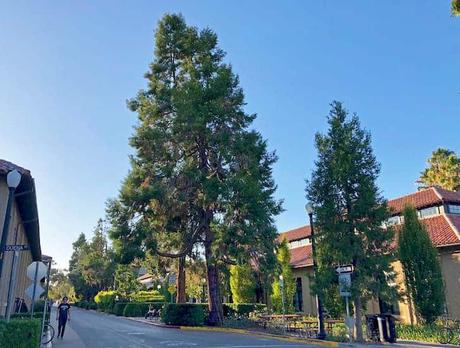11 Different Types of Cedar Trees With Pictures
Native to the Himalayan region, the Cedar Tree grows abundantly in the Mediterranean and several other parts of the globe with mild to moderate climate. Cedars are evergreen, with leaves growing throughout the year and their defining quality lies in the strong and intense scent from the leaves.
But did you know that Cedar trees can be categorized into multiple types? True Cedar, for instance, has four broader types. Again, faux Cedar has as many as three different types. In this article, we will discuss these types in detail, shedding light on the 11 most popular types of Cedar trees.
Different Types of Cedar Trees
1. Deodar Cedar

With the scientific name Cedrus Deodara, the Deodar Cedar is one of those coniferous plants that is best known for their ‘weeping’ habits. Their name derives from the Sanskrit word ‘devadaru’ which refers to the ‘timber of gods’.
The Deodar Cedar is commonly found in parks, gardens, and any other open space. Thanks to their beautiful leaves, they can deck up any place beautifully. The Cedar is also the national tree of certain countries and has managed to bag the Award of Garden Merit from the iconic Royal Horticultural Society.
If you’re wondering how to identify the Deodar Cedar: it’s pretty simple. These trees can be identified by their striking physical attributes. For instance, they exhibit long, coniferous needles (ranging between one to two inches) and are available in deep blue and greenish colors.
As with many other variants of Cedar, these plants require the maximum exposure from the sun and thrive best in moist and sandy soils. The Deodar Cedar Trees can assume a height of 40 to 50 feet,
2. Eastern Red Cedar
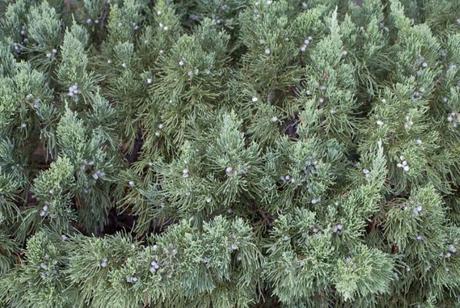
Scientifically termed as the Juniperus Virginiana, the Eastern Cedar is a part of the Cypress family. This species of plant is primarily grown in the Eastern regions of the United States and they can assume a height of 20 m to 40 m.
In some instances, however, they take up size of 100 m or even higher. The Eastern Cedar is widely touted to be the ‘Aromatic Cedar’ because of its intense, woody smell. The same wood also creates a range of organic oils that may be used for lining closets and moderately sized drawers to prevent the infestation of insects.
The Eastern Red Cedar produces the most versatile and durable variants of woods that are primarily used in making furniture, floor, and siding walls.
3. Western Red Cedar

Abundantly found in the Northwestern parts of the United States and Canada, the Western Red Cedar is perhaps best defined as a Cypress tree. It belongs to the Cupressaceae family of Cedars and is often touted to be the Pacific Cedar.
These Cedar trees are incredibly large and can assume a size of up to 200 ft or higher. They also sustain for years, and in certain instances, the Western Red Cedar Trees has survived for more than 1,000 years.
The tree features dense green foliage and when you crush the leaves with your fingers, you’d notice a subtle and yet distinctive odor similar to that of the pineapple. Being decay and pest resistant, the wood of the Western Red Cedar Tree is primarily used during outdoor construction. Some common applications include fences, decks, sidings, and smaller sheds.
4. Atlas Cedar
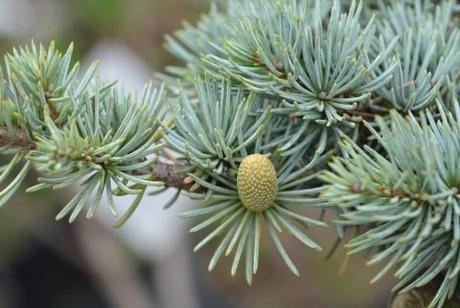
Alternatively termed as the Cedrus Atlantica the Atlas Cedars are a bunch of tall and coniferous trees that can assume a lofty height of around 40 to 60 feet. These trees also have a striking trunk diameter ranging from five to six feet.
Abundantly found in the Moroccan Atlas Mountains, these Cedars witness a slow to moderate growth. They also have a striking pyramid-like structure whereby their silhouette is large and open. For proper and consistent growth, these trees require full or at least partial shade.
They generally thrive well in moist and well-watered soil and can comfortably sustain drought or harsh winds. These trees, however, are more likely to be affected by pests. That is why; you should occasionally spray them with pesticides to avoid similar infestation.
For extra care, you need to fertilize them with formulations that will effectively boost their growth. Consider trimming the trees when they are young to proper and even growth. This will also prevent heavy leaf shedding during intense snowfalls. Since these trees grow best in large areas, make sure you have ample space in the area whether the Atlas cedar is growing.
5. Cyprian Cedar
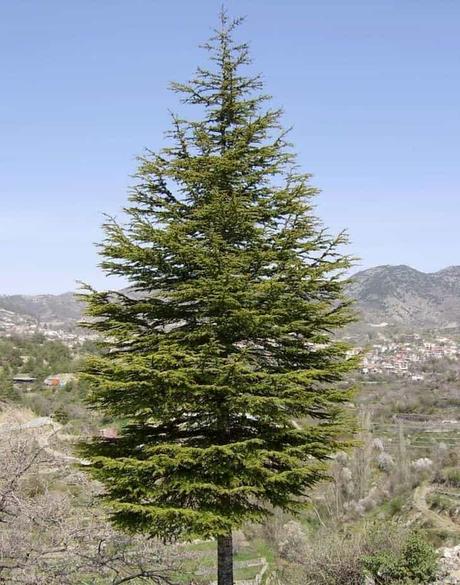
This is probably one of the unique species of Cedar. As evident from the name, they primarily grow along the Mountainous regions covering Cyprus and Turkey and certain parts of Syria. Often touted as the Yellow Cedar, the Cyprian Cedar is popular for its tiny leaves and the umbrella-esque crown.
In certain instances, the Cyprian Cedar may be compared with the Cedar of Lebanon species due to the many similarities they share. That said, both these trees have varying physical attributes. For instance, while Cyprian Cedar has small, rounded leaves, the Cedar of Lebanon has more elongated leaves. Either way, the Cyprian Cedar is an excellent species of Cedar and it requires plenty of space for optimal growth.
6. Northern White Cedar
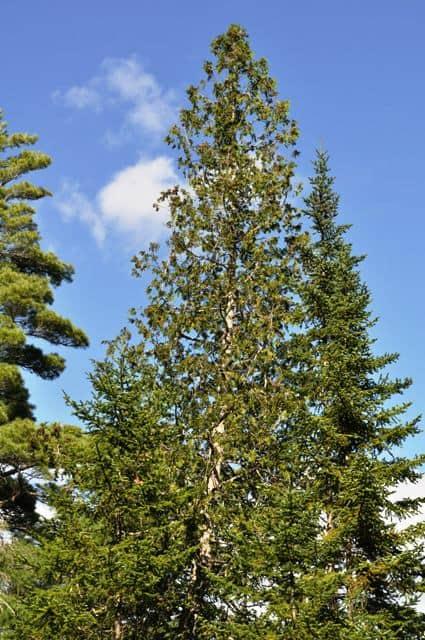
Source
Often termed as the ‘Arbor Vitae’ which translates to the Tree of Life, the Northern White Cedar is abundantly available in the Southeastern parts of Canada and the North and Northeastern parts of the US. The wood or logs from this form of cedar is significantly lighter than that of Red Cedar.
This is also one of the many reasons why it is so incredibly simple to work with this variant of Cedar Trees. Given its lightweight structure, its wood tends to be fragile and can comfortably cut without requiring powerful tools like cutters or even backer boards. As with Western Cedar, it creates beautiful and stunning furniture.
The Northern White Cedar Plant can be identified by its thin, creamy sapwood that covers the light brown inner area of the wood. It is both beautiful and hardy. As with many other species of Cedar Trees, the Northern White Cedar can withstand every kind of infestation from pests. Since it is also decay-free, these woods are a top choice for outdoor construction like posts, decking, and similar other structures.
7. Alaska Cedar

Popularly termed as the Yellow Cedar, the Alaska Cedar is abundantly available in the Pacific Northwest Regions. It stretches from the Pacific Northwest to Alaska, up until British Columbia. The wood from Alaska Cedar Trees is both tough and dense and this is quite contrary to the kind of wood available in generic cedar trees.
The wood is best known for its striking yellow color and tightly knit rings. Note that these rings itself bear the maximum proof to the trees’ slow growth.
The Yellow Cedar Wood is abundantly used by American builders for creating light and sustainable decks, bridges, and interior panels (to name a few). This wood is also incredibly popular among famed musicians and the wood has an excellent sound quality.
While this wood is primarily available in yellowish hues, you might also find it in creamy variants with a dash of deep brown steak. While processing lumber, the wooden machines put immense strain on the wooden logs to create a perfect strain on it.
8. Spanish Cedar
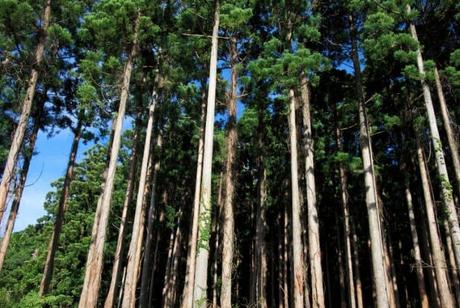
Scientifically known as the Cedrela Oderate, the Spanish Cedar is abundantly found in the Central and South African regions. Being extremely lightweight, this tree is a wide choice among builders and wood cutting professionals who use it for a wide range of construction operations like building windows, cabinets, tables, centerpieces, and cabinets.
While you wouldn’t find them as easily in European of US-based countries, this type of Cedar is still one of the most popular options for lining humidors. Thanks to its beautiful natural oils, and resistance to moisture and pests- it continues to be a top choice among woodworkers.
The Spanish Cedar Tree features multiple straight-lined areas that are easy to cut through on machines. While their heart-wood is either pink or brown, over time, they darken to take deeper hues.
Either way, the Spanish cedar is a durable and versatile plant that can effectively resist insects, pests, and decay. Since it is also easy to maintain, many people consider investing in it.
9. Lebanon Cedar

Scientifically termed as the Cedrus Libani, this tree is native to Lebanon and Turkey. In fact, it is also the National Tree of Lebanon. Given its immense prominence, this tree has also been grown in several other parts of the world like Syria and Afghanistan.
As with several other variants of Cedar, these trees feature elongated leaves with a Pyramid-shaped structure. They can assume a height of up to a whopping 40 meters and are a true delight to look at!
The Lebanon Cedar also comes with significant Historical relevance. As per multiple records, these trees were imported to Egypt during King Sherefu’s reign to create boats. At that time, several noblemen from Byblos and Mesopotamian regions would travel to Lebanon to get these trees.
You will also find the reference of these trees in multiple scriptures. Due to its beautifully fragrant woods, the tree would often be used while making buildings in Israel. It is believed that King David used the Lebanon Cedar for building his palaces. Similarly, Solomon too is believed to have used this tree for building his temple and palace.
10. Eastern White Cedar
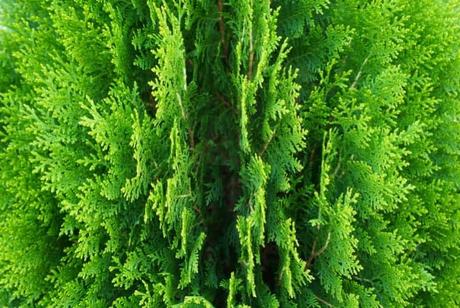
This is light brown colored soft Cedar Wood that is primarily found in the North-Eastern parts of the US and the Southern Parts of Canada. Like several other trees belonging to the same species, the Eastern White Cedar is known to treat asthma, a range of convulsions, and instances of miscarriage. Since it is not much dense, these types of trees are also more susceptible to being damaged due to pests or adverse weather conditions.
11. Incense Cedar
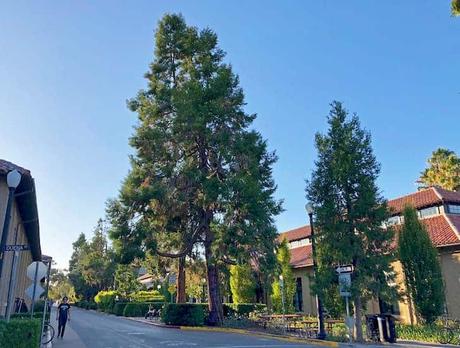
Native to the US, the Incense Cedar is widely found in Oregon, California, and Nevada. Like several other variants of Cedar Trees, the Incense Cedar assumes a base of 15 feet and can reach up to a whopping 75 to feet when it comes to height. The bark of these trees is Reddish maroon and they also have bright green needles.
The Incense Cedar derives its name from the strong scent it exudes during the warmer weather. The tree is exceptionally tough and can withstand adverse weather and poor soil. It doesn’t require occasional watering either.
Bottom Line
Well, that was all about Cedar trees, and their thirteen unique types. Each of these trees is unique and remarkable for their distinctive qualities like the type of wood, the color of foliage, and more. Since we’ve given a brief overview of the various types of these trees, we are certain that you can now identify these trees according to their type and structure.

Source: Visually
References
